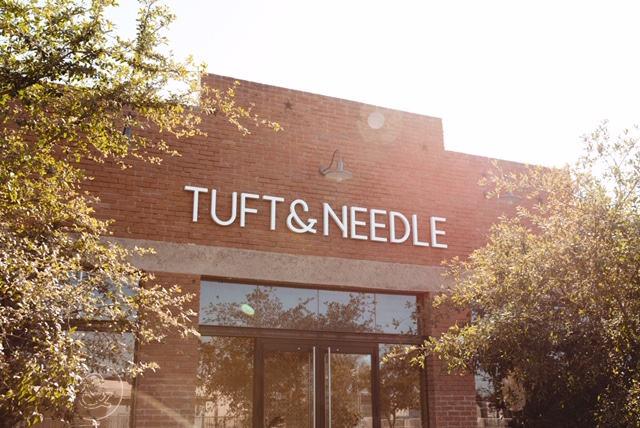If you’ve ever been brave enough to share your amazing new business idea with a friend or family member, you’ve undoubtedly been met with a hesitant head tilt and the start-up skeptic’s favorite refrain: You know, 50% of new businesses fail by their fifth year.
They mean well. They’re only worried about your wellbeing. But their lack of faith isn’t totally unfounded. Making it out of the fifth year with your head still on straight is a feat worth celebrating. But making it out of the sixth year, now that’s a little more complicated. By year six, you’re a seasoned team that’s making its way out of scrappy start-up and into an established business. You’ve figured out your market, your product, and you’re rolling full speed ahead—that’s when the real trouble begins.
Here are the five things you’ll have to figure out in your sixth year of business.
1. You’ll have to navigate a Big Problem.
We went from a single mattress in 2012 to an entire bedroom’s worth of products by 2017—and a large portion of those products were launched in a 12-month period. Scaling at this speed can cause a lot of gaps in product quality, and other issues we hadn’t encountered previously. We saw this manifest in a few products, from adhesive issues in our core mattresses to a stressful product recall. We knew we had a huge problem to tackle or risk the satisfaction of our customers.
At the height of these issues, our box foundation return rate was skyrocketing, and we couldn’t figure out why. We had sourced the best of the best, we thought, but customers clearly didn’t agree. A missed step in the feedback process between our CX and Ops teams was preventing us from being about to get to the real issue—which cost time, money, and worst of all, our customers’ trust. It turned out, after a lot of investigating, that the plastic pins used to hold our foundation together were breaking easily, creating a poor customer experience.
We asked our Superior Quality Manager, Garrison Mills, to weigh in on the takeaways from such a difficult to solve the problem. “You can have all of the data in the world, but it doesn’t do you much good if you don’t catch a trend soon enough. After we experienced the wave of box foundation issues, we started creating internal, real-time dashboards to alert us the moment a defect began to trend upward. This has been a big step forward for us in being able to react quickly to these issues when they come up.”
Additionally, we began building external-facing dashboards that, in some cases, were even better than the systems our vendors were using for their own quality management and assurance. Many were hardcoding the weekly data we sent into their own QMS, which resulted in data-fidelity problems. Creating external dashboards eliminated manual data entry by their teams and ensured that they were seeing exactly what we were seeing when we were seeing it.”
2. You’ll have to completely reconsider your strategy.
What works in the first few years might start to shift once you’re a more established business. We’ve faced two major challenges that any brand can relate to, and we’re still navigating them as we learn.
Our competitive landscape rapidly changed. When we started, we were the first of just a few big names out there, but by our second and third years, there were dozens of copycat mattress-in-a-box companies on the internet. We knew our product offering was unique, but the customer couldn’t see it through a sea of similar information and images. We’ve had to constantly rethink how we present our products, and we’re still trying to get above the noise.
We also had to shift our retail strategy. We crafted a very hands-on experience with our product, including a personal guide in a private showroom. Customers would walk into our downtown Phoenix or San Francisco showrooms and wade through a thick crowd, just to be quoted a wait time. We wanted to do things differently when it came to mattress shopping, but we realized the wait times to see our product were creating a worse experience, not a better one. It took many iterations and customer feedback to hone in on our current experience, and we aren’t married to the way things have settled now, either.
Learning to be flexible, open to new ideas, and above all, open to customer feedback, is a lesson that takes you from a two-year burnout to a 10-year veteran business.
3. You’ll underestimate yourself.
When we launched our Mint Mattress, our second mattress design, on Black Friday of 2017, we weren’t prepared for the reception we got. After forecasting, getting all of our product assets together, and sending one simple email announcement, we planned to sell about 500 units.
We sold 6,500 that weekend alone.
That sounds like great news, right? What a success! But we were woefully unprepared for the backlog the demand for the Mint created with our manufacturers. Shipping was delayed, we
didn’t have the product itself back in stock until February of 2018, and our CX team was left to answer a lot of (rightfully) upset customers.
We can’t say it was the last time we underestimated our own products, but we learned a huge lesson—when you design a mattress specifically based on customer feedback about your already popular mattress, be prepared for it to sell.
4. You’ll have to make painful decisions.
At a certain point in your business, revisiting roles is important. No one ever wants to lay people off, and we had successfully avoided it in our first five years. However, it became clear as we reorganized and grew that some roles had become redundant. Some people weren’t fulfilled by their job any longer, and some teams didn’t make sense, no matter how much we loved the people on them.
Handling a layoff or restructure requires a lot of empathy, a lot of transparency, and a lot of patience. It’s important to honor the work your team members have put in, but when the time comes, having those tough conversations is a vital move to take your company to the next stage.
5. You’ll make an expensive move that might not pan out.
We’ll keep this one brief for a lot of reasons, but there’s still a lesson to be learned here. In 2016, we got involved in dueling ad campaigns with a competitor. Things got pretty heated, and soon we found ourselves in a lawsuit. More importantly than any legal significance, the end result didn’t have the impact we hoped for with our customers, the campaign seemed to be more interesting to industry insiders than to consumers. Sometimes, the move that feels right at the time isn’t one that your customers care about in the end—maintaining their happiness is a better long-term focus.
We’re cruising ahead toward that 10-year mark, and we’re excited to see what challenges we face in year eight, nine, and beyond. Tuft & Needle was founded to be one of the 100-year companies that customers can’t stop talking about. We’ve made our fair share of mistakes, but we always come away from them with a new lesson to apply to the next problem.
When your friend parrots that 50% statistic back to you, remember that there’s a reason half of businesses do make it beyond the five-year mark. Study their failures, let their successes inspire you, and if you’re executing on the right idea, you’ll stand the test of time.
Tuft & Needle is an American direct-to-consumer mattress and bedding brand owned by Serta Simmons Bedding. The company was founded on July 19, 2012 by Daehee Park and John-Thomas Marino in Phoenix, Arizona.

